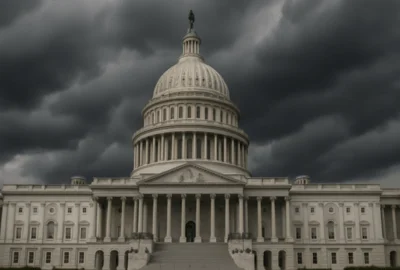The Biden-Harris Administration’s Kids Online Health and Safety Task Force, co-led by the U.S. Department of Health and Human Services’ (HHS) Substance Abuse and Mental Health Services Administration (SAMHSA) and the U.S. Department of Commerce’s (DOC) National Telecommunications and Information Administration (NTIA), released a new report today with recommendations and best practices for safer social media and online platform use for youth. The recommendations in the report, "Online Health and Safety for Children and Youth: Best Practices for Families and Guidance for Industry," underscore the Administration’s efforts to address the ongoing youth mental health crisis and support the President’s Unity Agenda for the nation. Task Force members also committed to future actions, including providing more resources for kids, teenagers, families, guidance for pediatricians, and conducting more research.
“Across the Biden-Harris Administration, we are committed to combatting the youth mental health crisis in this country and ensuring Americans have the tools and support they need to thrive online,” said U.S. Secretary of Commerce Gina Raimondo. “As more and more of kids’ time is spent online, this administration is taking steps to protect their privacy and mental health. The recommendations in our report will chart a path toward an Internet that works for everyone.”
“President Biden has made addressing the youth mental health crisis a top priority. That’s why we are taking steps to ensure the safety and well-being of young people when they use social media and online platforms,” said HHS Secretary Xavier Becerra. “The Biden-Harris Administration has a whole-of-government approach to protect the mental health, safety, and privacy of youth online, but it will take more than government alone to achieve results.”
Approximately 95% of teenagers, along with 40% of children between eight to twelve years old, use some form of social media. Digital technology use can both benefit young people’s well-being while exposing them to significant harm. Social media use has been associated with risks such as exposure to bullying, online harassment, abuse, discrimination, child sexual exploitation; adolescents seeking information about health topics risk encountering inaccurate or dangerous content.
The report provides a summary of these risks alongside benefits concerning young people's health, safety, privacy; best practices for parents/caregivers; recommended industry practices; a research agenda; suggested future work including federal government initiatives. Input was provided by youth advocates civil society organizations academic researchers other experts.
“SAMHSA is focused on helping young people their parents caregivers others protect their mental health when using social media/online platforms,” said Task Force Co-Chair Miriam E Delphin-Rittmon Ph.D., HHS Assistant Secretary Mental Health/Substance Use leader SAMHSA “We know while there are benefits building connections supportive communities there substantial cause concern reduce potential harms possible so young people thrive.”
“As young people spend more lives online past time act do more protect them,” said Task Force Co-Chair Alan Davidson Assistant Secretary Commerce Communications Information NTIA Administrator “This Task Force report outlines practices design choices companies implement today prioritize privacy kids well-being ability thrive online Our report suggests changes help safely navigate enjoy all benefits Internet offers minimizing risks face.”
Resources Parents Caregivers
Best practices resources parents caregivers include overarching framework strategies handouts conversation-starters engage children conversations about platforms technology use compendium resources Many materials developed coordination SAMHSA-funded Center Excellence Social Media Youth Mental Health run American Academy Pediatrics AAP
“The American Academy Pediatrics supports Kids Online Safety Task Force report released today commends SAMHSA Department Commerce addressing impact social media youth mental health” said Dr Megan Moreno co-Medical Director SAMHSA-funded AAP Center Excellence Social Media Youth Mental Health “To help make reports recommendations accessible actionable published new resources families those work with them including conversation starters activities help parents caregivers know what say how begin building foundational skills pleased strong partner work”
Collaboration Kids Online Health Safety Task Force AAP Center Excellence Social Media Youth Mental Health launching variety new web content including recommended best practices resources topic audience series age-based handouts parents pediatricians others distribute well-check visits new clinical case examples pediatricians clinicians demonstrating integrate conversations about media use consultations teen patients expanded content specifically teens
Industry Recommendations
Task Force identified 10 recommended practices service providers develop operate platforms mind Companies make design choices shape experiences contribute alleviate harms This urges industry prioritize well-being guidance ways:
Design age-appropriate experiences users;
Make privacy protections default;
Reduce remove features encourage excessive problematic use;
Limit likes comparison features default;
Develop deploy mechanisms strategies counter sexual exploitation abuse;
Disclose accurate comprehensive safety-related information apps;
Improve systems address bias discrimination experience;
Use data-driven methods detect prevent cyberbullying forms harassment abuse;
Provide age-appropriate parental control tools easy understand use;
Make data accessible verified qualified independent research.
Research Agenda
Research agenda includes objectives continued study harms associated platform development evaluation scalable interventions protect children’s safety privacy broadening access data algorithms developmental perspective studying impacts well-being specific topics domains interests relate physical well-being safety These include comparisons different groups efforts address effects ubiquitous computer schools Additionally highlighted approaches include spectrum spaces focus casual interpretivist methods assessing collected shared monetization processes engaging youth.
Next Steps
Report concludes recommended next steps policymakers:
Enacting bipartisan legislation protect health safety privacy action implement age-appropriate best through voluntary commitments
Require access platform independent researchers preserving ways
Support research into privacy
Promote voices solution setting
Support access updated tailored providers educators
Engage international collaborate
About Kids Online Health Safety Task Force
Interagency announced May 2023 strengthen protections children’s comprised leadership Education Homeland Security Justice Executive Office President representative Federal Trade Commission builds prior across government including 2023 Surgeon General Advisory on Social Media Youth Mental collaborative initiative aimed addressing measures making safer brings together experts policymakers stakeholders devise strategies promoting awareness among individuals If struggling crisis available Call text chat at learn support drug alcohol visit ready locate treatment facility provider directly call Reporters questions inquiries





